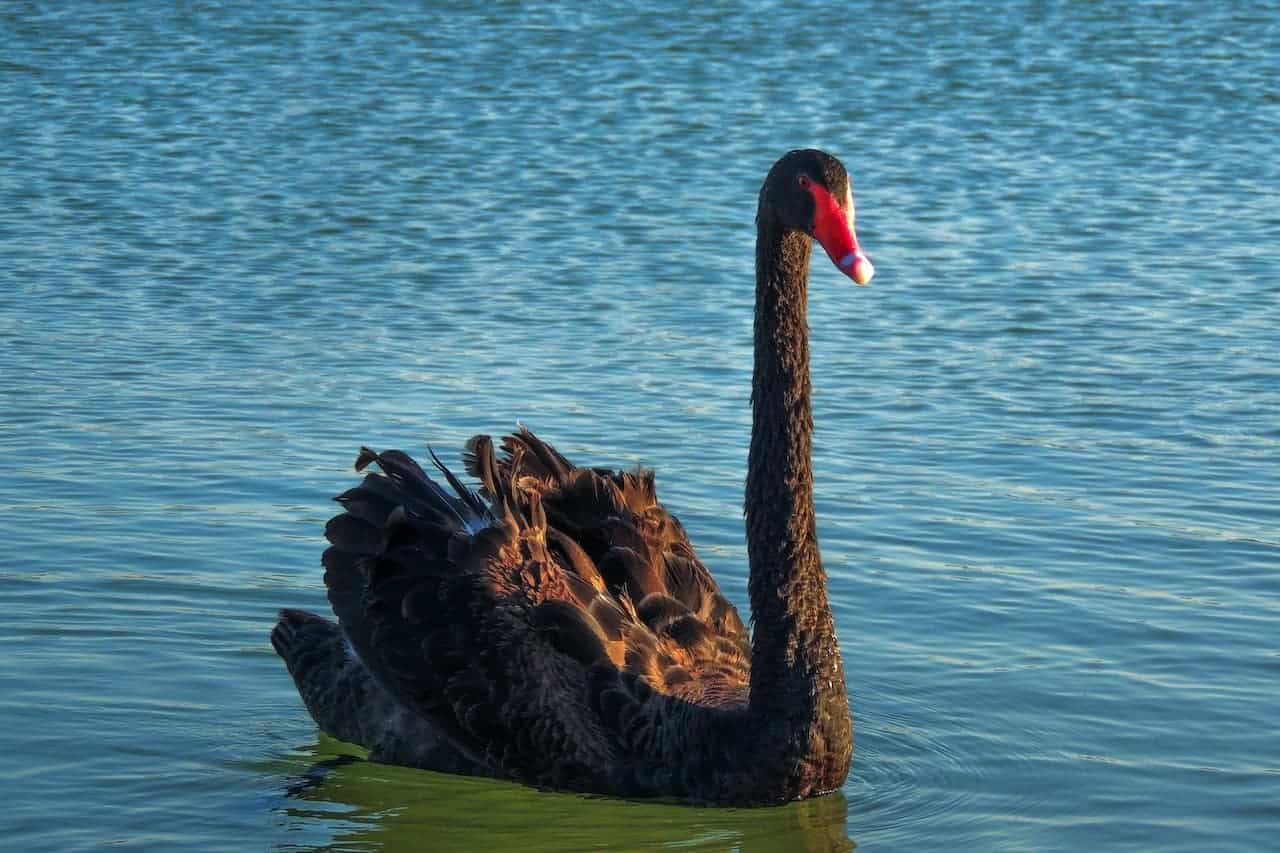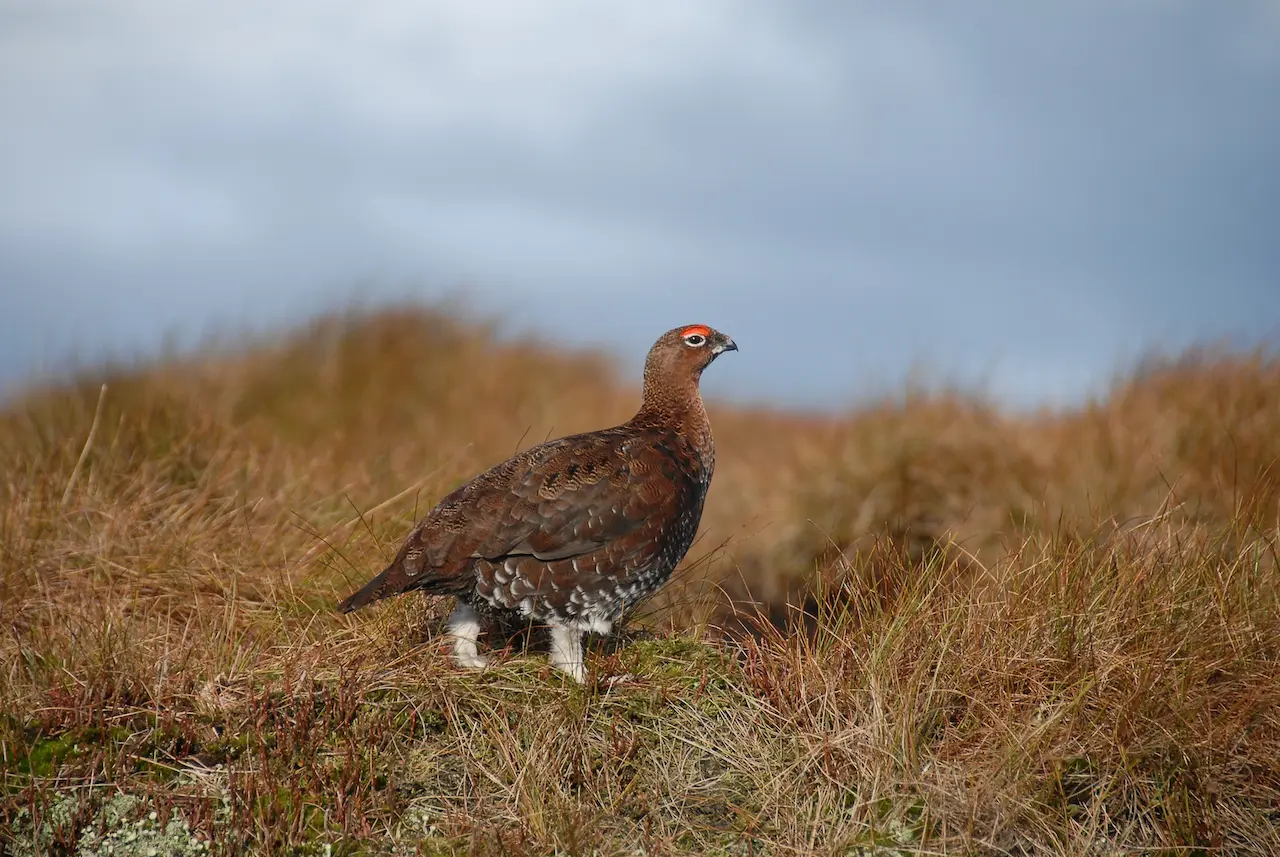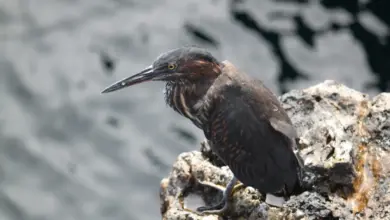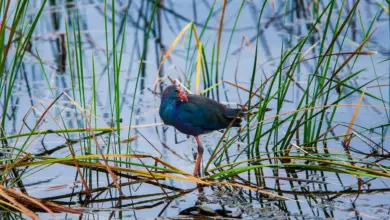The Whooper Swan (Cygnus cygnus) is a large swan that occurs in the Northern Hemisphere. It is closely related to the North American Trumpeter Swan (Cygnus buccinator).
The male is called a “cob” – from Middle English cobbe (leader of a group); the female “pen,” and their chicks are known as “cygnets” – from the Latin word for swan, cygnus.
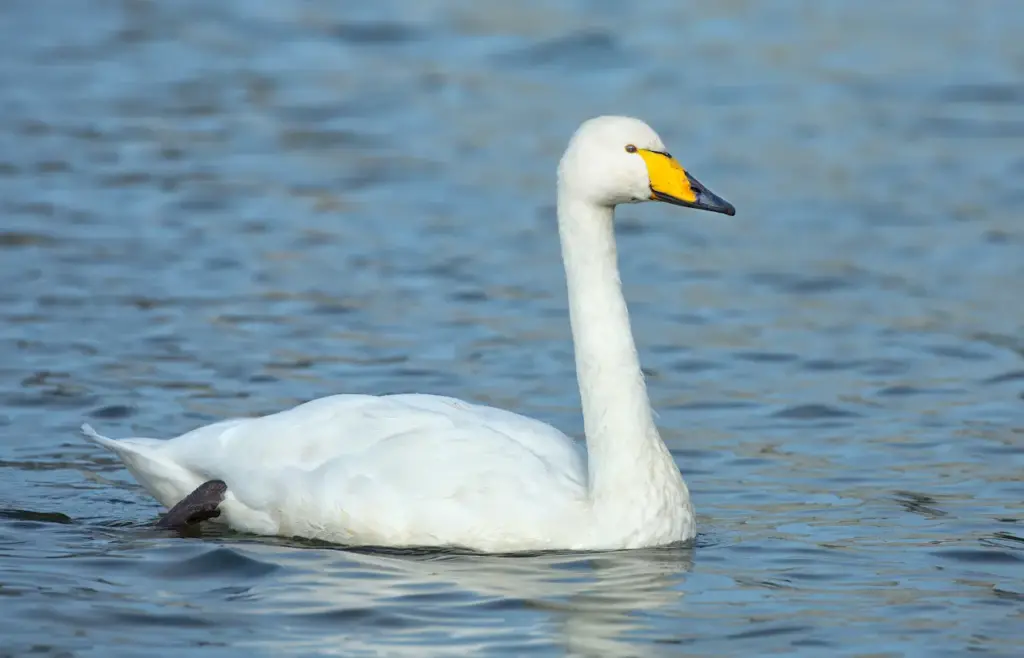
Distribution
Whooper Swans breed in Iceland, northern Europe and Asia.
They migrate south to winter in west and central Europe – around the Black, Aral and Caspian Seas and coastal China and Japan.
In Great Britain, they breed in northern Scotland, particularly in Orkney. They overwinter in northern and eastern England as well as Ireland.
They usually migrate to their winter territories around October and arrive back in their breeding territory in April.
The Whopper’s Swan is native to the following countries:
Afghanistan; Albania; Armenia; Austria; Azerbaijan; Belgium; Bosnia and Herzegovina; Bulgaria; China; Croatia; Czech Republic; Denmark; Estonia; Faroe Islands; Finland; France; Germany; Greece; Greenland; Iceland; India; Iran, Islamic Republic of; Iraq; Ireland; Italy; Japan; Kazakhstan; Korea, Democratic People’s Republic of; Korea, Republic of; Kyrgyzstan; Latvia; Lithuania; Macedonia, the former Yugoslav Republic of; Mongolia; Montenegro; Nepal; Netherlands; Norway; Pakistan; Poland; Romania; Russian Federation; Serbia; Slovakia; Slovenia; Spain; Svalbard and Jan Mayen; Sweden; Switzerland; Taiwan, Province of China; Tajikistan; Turkey; Turkmenistan; Ukraine; United Kingdom; Uzbekistan
It is a vagrant to:
:Algeria; Cyprus; Egypt; Hungary; Israel; Liechtenstein; Luxembourg; Portugal; Tunisia; United Arab Emirates, United States, Canada
Habitat
During winter they can be found in inland lakes, estuaries, marshes, rivers and bays. When breeding, they occur around shallow lakes and coastal flats.
Alternate (Global) Names
Czech: labu? zp?vná … Dutch: Wilde Zwaan … German: Singschwan … Danish: Sangsvane …. Finnish: laulujoutsen … French: Cygne chanteur … Icelandic: Álft … Italian: Cigno selvatico … Japanese: oohakuchou … Norwegian: Sangsvane … Polish: ?ab?d? krzykliwy … Portuguese: Cisne-bravo … Slovak: labu? spevavá … Spanish: Cisne Cantor … Swedish: Sångsvan
Description
Whopper Swans are large swans that average 4.6 – 5.6 feet (1.4 – 1.65 meters) in length. The male tends to be larger than the female, averaging 5.6 feet (1.65 meters) and weighing about 24 lbs (10.8 kg); while the female typically weighs 17.9 lbs (8.1 kg).
Their wingspan is ~ 6.75 – 9.2 feet (2.1 – 2.8 meters).
It has a pure white plumage. The webbed feet and legs are black. Half of the beak is orangey-yellow (at the base), while the tip is black. These markings on the bill differ and individuals can be recognized by their bill pattern.
Juveniles usually have a white plumage, but grey-colored cygnets are not uncommon.
Similar species
The Whooper Swan can easily be identified from other white swans by the color of the beak.
The Whooper Swan resembles the Bewick’s Swan. but the orangey-yellow markings on the bill is more extensive on the Whooper Swan. The Bewick’s bill has more extensive black markings on the bill. The Whooper Swan is larger and longer-necked than the Bewick’s and has a more angular head shape.

Breeding
The Whooper’s Swans breed in freshwater marshes, ponds, lakes and along slow-flowing rivers.
Most Swans find their mates before the age of 2 years – usually during the winter season. Even though some may nest for the first time when they are two years old, most won’t start until they are 3 to 7 years old.
Upon arrival in the breeding territory, the pair will engage in courtship behavior, which includes bobbing their heads and facing each other with quivering wings.
Swan pairs typically bond for life and pairs stay together throughout the year, including moving together in migratory populations. However, it has been observed that some of them switch mates over their lifetimes, particularly after nesting failures, and some that lost their mate did not mate again.
If a male pairs up with another younger female, she will typically join him on his territory. If he pairs up with an older female, he will go to hers. If a female loses her mate, she will usually pair up quickly – usually choosing a younger male.
Bonded pairs tend to remain together year-round; however, outside the breeding season, they are highly social and often congregate with large numbers of other swans. During the breeding season, pairs will, however, aggressively defend their territories.
In captivity, Whooper Swans have been reported to hybridize with Mute Swans, Trumpeter Swans, Tundra Swans and Greylag Geese.
Nest
The Swan’s nesting season is timed to take advantage of readily available food supplies. Nesting mostly usually occurs from April through July.
They will nest in areas with ample food supply, shallow and uncontaminated water, and few disturbances. Usually, only one pair nests on a single body of water.
These nesting territories range from 6 to 150 acres in size and are often located near where the female was hatched. The female chooses the nesting area, while the male defends it. Swan pairs are most likely to return to the same nesting site if they were able to raise young successfully there in the past.
Nest sites are often situated on slightly elevated sites surrounded by water, such as on top of old beaver houses, dams or muskrat mounds; on emergent vegetation that is either floating or anchored to the bottom of the water; or on small islands. Pairs will either build a new nest or repair the nest that they have used in previous years.
Nest construction commences in mid-April and it may take up to two weeks for it to be completed. The male collects aquatic vegetation, grasses and sedges, and transfers them to the female.
She will first pile the plant material up high and then uses her body to form a depression to lay her eggs in. The nest is basically large open bowl. The inside of the nest s lined with down, feathers and soft plant matter found in her environment.
The nests may reach a diameter of up to 11.5 feet (1 to 3.5 meter) and is often surrounded by a 20 to 30 foot (6 to 9 meter) ditch. This ditch is usually filled with water to make it more difficult for mammalian predators to reach the nest.
Eggs / Incubation
Egg laying typically takes place from late April to June, sometimes even before the nest is completed. The female lays an egg every other day until the clutch is completed. There are usually 5 – 6 creamy white eggs in a clutch.
However, on occasion up to 12 have been found. If it is the female’s first clutch, there are likely to be fewer eggs and more of these eggs are likely to be infertile. An egg measures about 2.9 in (73 mm) wide and 4.5 in (113.5 mm) long; and weighs around 11.3 oz or 320 g.
Once the clutch is complete, the female commences the brooding of the eggs which lasts about 31 days. During this time, male remains close to the nest site and defendd the brooding female against intruders and predators. On very rare occasions, the male may assist with the brooding of the eggs.
During the incubation period, the female leaves the nest only for short periods to feed on nearby vegetation, to bathe or preen her feathers. However, before leaving the nest, she will cover the eggs with nesting material to conceal them. The male will also remain nearby to protect the nest.
The adults have been observed performing a “victory display” after intruders are deterred, which is similar to their courtship display and consists of facing each another while quivering their wings and trumpeting loudly.
The pair may lay a second clutch if the first eggs or cygnets are lost.

Raising the Chicks / Post Nesting
Diet / Feeding:
What they eat …
Swans feed primarily on aquatic plants; but they also eat grain, grasses and crop foods, such as wheat, potatoes and carrots – especially in the winter when other food sources aren’t readily available.
Only young cygnets (immature swans) eat aquatic insects and crustaceans, as they have a higher requirement for protein than the adults. As they get older, their diet changes over to a plant diet, which includes aquatic vegetation and roots.
How they eat …
In shallow water, Swans may use their strong webbed feet to dig into submerged mud and, like mallards, they tip up – plunging the head and neck underwater – to expose and feed on roots, shoots and tubers. The cygnets feed on invertebrates and aquatic vegetation stirred up by their foraging parents. Ducks and other water birds also often follow swans to forage on exposed plant matter and aquatic insects.
Their long necks give them an advantage over the short-necked ducks, as they can feed in deeper waters than geese or ducks. They can feed in waters that are up to 4 feet (1.2 meters) deep by uprooting plants and snapping off the leaves and stems of plants growing underwater.
Swans also forage by swimming picking up plant material from the water’s surface or water’s edge.
On land, they feed on grains and grasses. Since the mid 1900’s, its foraging behavior during the winter has changed to include more ground feeding
- The Diet of Swans and Feeding Swans
Calls / Vocalizations
Their calls consist of a loud, deep, sonorous, trumpet-like honking sounds. Their vocalizations also include peeps, hisses and gurgles.
Their loud calls carry for a great distance.
Lifespan / Age
Swans are known to live 20 to 30 years. Swans form pair bonds when they are two to four years old and remain bonded for life. The first nesting usually occurs when they are 4 or 5 years old.

